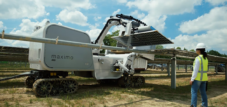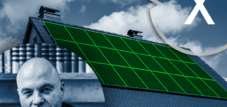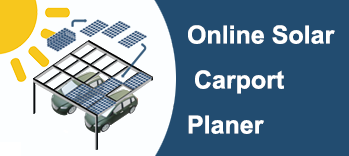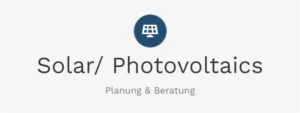Solar modules with MagicFrame – The small but important difference: Save costs, time and materials
Language selection 📢
Published on: August 22, 2025 / Updated on: August 26, 2025 – Author: Konrad Wolfenstein
Solar modules with MagicFrame – The small but significant difference: Save costs, time and materials – Image: Xpert.Digital
Solar system in 35 minutes? How a simple click changes installation forever
### The invisible cost driver in solar systems – and how this simple frame eliminates it ### A small frame, a huge impact: Is this the future of solar energy? ### MagicFrame vs. standard module: Why the small difference ultimately saves thousands of euros ###
That is why the frame is the new heart of the solar system
Over the past few decades, photovoltaics has evolved from a niche technology to one of the mainstays of the global energy transition. While previously the primary focus was on increasing the efficiency of solar cells, today's focus is increasingly on issues of system integration, ease of installation, and long-term economic viability. Technological advances affect not only the cells themselves, but also the way modules are assembled and operated.
A notable example of this development is the so-called MagicFrame system. This module design differs only slightly from conventional solar modules at first glance, but in practice brings about profound changes. It enables faster installations, reduces costs for materials, transport, and assembly, and at the same time ensures increased operational reliability over the entire service life.
The question that arises is: Do we still need the classic modular frame when systems like MagicFrame show that it can be done without clamps, screws and complex substructures?
"In addition to the standard solar modules, there is also a version with the frame extension. The small but innovative difference lies in the product name extension 'MagicFrame'. Many well-known brand solar module manufacturers also offer the MagicFrame version alongside their standard solar modules.
In the MagicFrame version, the solar modules have a frame underneath that allows them to be easily and quickly clicked onto a rail and attached.”
Konrad Wolfenstein
From the panel era to the system era
The solar industry is in a phase that many experts describe as a transition from the so-called "panel era" to the "system era." In the panel era, the focus was on the individual module: Manufacturers competed for the most efficient solar cell, the lowest degradation rates, or the best warranties. But energy generation has now matured to such an extent that the individual module no longer offers the greatest leverage.
Today, the total cost of a system—the so-called Levelized Cost of Energy (LCOE)—counts, including the costs for substructure, transport, logistics, and installation. In other words, it's no longer just the panel that counts, but the system as a whole.
This is where MagicFrame comes in. While conventional modules require clamps, screws, and complex mounting systems, MagicFrame modules come with the "second-level frame" built right in. This makes installation significantly faster and more reliable, and the industry is making the transition from focusing on individual components to optimizing entire systems.
The concept of MagicFrame
MagicFrame modules differ from standard modules in that they have an additional frame extension underneath. This extension is not just a static component, but serves as a functional interface between the module and the mounting rail.
Instead of being attached with clamps and screws, the modules can simply be placed on the rail and snapped into place. This process, often described as "clip-in installation," eliminates several typical problems of conventional installation:
- There are no screws that could come loose.
- There are no clamps that could damage the module edges.
- There are no time-consuming adjustments that lead to alignment errors.
The result is an installation that is not only faster, but also more secure and error-resistant.
Economic benefits in detail
Cost savings in production and transport
A key advantage of MagicFrame is the reduction of material and transportation costs. The intelligent design allows for savings in frame materials, which directly impacts production costs per watt. At the same time, more compact packaging reduces the space required for transport, allowing more modules to be shipped per container.
According to industry analyses, packaging and shipping costs have been reduced by up to eight percent compared to standard modules. The material savings on the frame itself also result in significant overall cost savings.
Savings in assembly and structure
The advantage is even more evident during installation. While traditional systems require complex substructures and numerous small parts, MagicFrame eliminates most of these additional components. This not only reduces direct material costs but also significantly reduces labor.
A practical example illustrates this: At a test construction site, 26 modules, including the supporting structure, were installed in just 35 minutes. This rate is almost unattainable with conventional mounting systems. This acceleration reduces EPC (engineering, procurement, and construction) costs by several percentage points per watt of installed capacity.
Advice - planning - implementation
I would be happy to serve as your personal advisor.
contact me under Wolfenstein ∂ Xpert.digital
call me under +49 89 674 804 (Munich)
Shorten construction time, not lifespan – Click. Done. Solar.
- New: Patent from the USA – Install solar parks up to 30% cheaper and 40% faster and easier – with explanatory videos! – Image: Xpert.Digital
- NEW: ready -to -mount solar systems! This patented innovation accelerates your solar construction massively
More about it here:
- New: Patent from the USA – Install solar parks up to 30% cheaper and 40% faster and easier – with explanatory videos!
- ModuRack is leading the solar industry from the “panel era” to the “system era”
- Substructure & Installation – Solar systems without clamps: The ingenious trick for faster and more cost-effective installation
ModuRack in Review: Why Solar Projects Are Now Faster and Safer
Quality and safety aspects
In addition to the economic benefits, MagicFrame also offers a number of qualitative improvements.
Avoiding assembly errors
Because the modules and brackets essentially form a single unit, the risk of human error is reduced. Incorrectly placed screws, improperly fastened clamps, or uneven clamping are a thing of the past.
Protection against cracks and damage
A particularly critical issue with conventional installations is cracks at the module edges, which can occur due to improper installation or wind loads. MagicFrame avoids this problem with its clamp-free fastening. This eliminates the point load at the edges, significantly reducing the risk of glass breakage or microcracks.
Reducing hot spots
The operational phase also benefits. Conventional module frames tend to collect dust and dirt at the edges. This can cause hot spots, i.e., overheating of individual cells. Because the MagicFrame design is more open on the sides, this risk is minimized.
Long-term operational reliability
Over its lifetime of up to 30 years, MagicFrame not only reduces initial costs but also ongoing operating costs. Fewer failures and lower maintenance costs mean greater reliability and better returns for investors.
Use in real projects
The practical suitability of MagicFrame has already been proven in various projects worldwide.
In China, for example, a system equipped with MagicFrame modules survived severe storms and hurricane conditions without damage. Long-term tests, such as those conducted at a demonstration site in Suzhou, also demonstrated stable performance over several years without any safety-related incidents.
These experiences show that this is not just a theoretical concept, but a tried-and-tested solution that works reliably even under difficult conditions.
From module to system: ModuRack as a complete solution
While MagicFrame optimizes individual modules, the next step is integration into complete systems. ModuRack for example, takes this approach a step further by rethinking the entire substructure.
Instead of laboriously screwing together numerous individual parts, ModuRack relies on standardized system components that harmonize directly with the MagicFrame modules. This not only makes installation faster but also more predictable. Projects can be implemented in a shorter time, and the error rate is drastically reduced.
This step underscores how the solar industry is moving beyond pure module optimization and entering the “system era.”
Standard or niche?
Experience from pilot projects and the clear economic advantages suggest that MagicFrame will play an increasingly important role in the coming years. The advantages are particularly evident in large solar parks, where every minute of installation time saved and every gram of material saved can add up to millions.
The exciting question is whether MagicFrame will also gain acceptance on a smaller scale—for example, in rooftop systems for private households. Here, installation times are less critical, and factors such as roof geometry and customization play a greater role. Nevertheless, the advantages of simplified installation could become increasingly attractive even there.
A small difference with a big impact
MagicFrame demonstrates that innovation doesn't always have to take the form of a radically new product. Sometimes a clever extension of an existing concept is enough to trigger profound change.
The additional frame may seem inconspicuous at first glance, but it changes the entire logic of module assembly. What once required laborious screwing and clamping is now simply snapped into place.
MagicFrame thus represents not just a technical innovation, but a paradigm shift in photovoltaics: away from the optimization of individual components and toward a holistic approach to systems. And this is precisely where the future of solar energy lies.
Your partner for business development in the field of photovoltaics and construction
From industrial roof PV to solar parks to larger solar parking spaces
☑️ Our business language is English or German
☑️ NEW: Correspondence in your national language!
I would be happy to serve you and my team as a personal advisor.
You can contact me by filling out the contact form or simply call me on +49 89 89 674 804 (Munich) . My email address is: wolfenstein ∂ xpert.digital
I'm looking forward to our joint project.
























